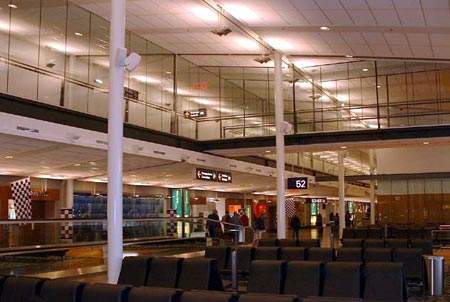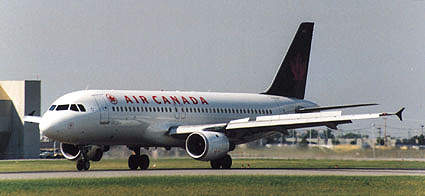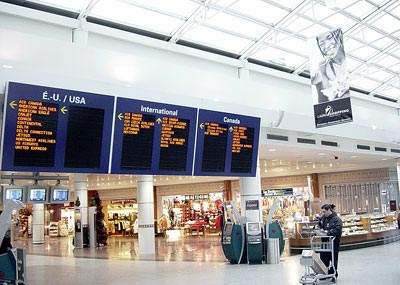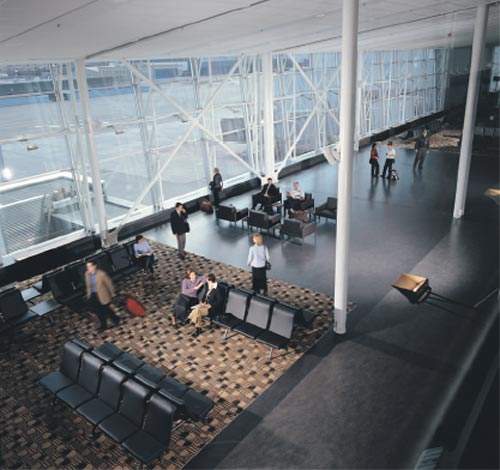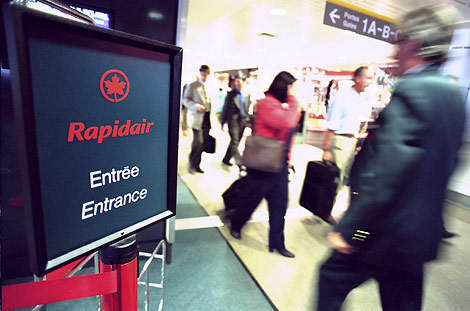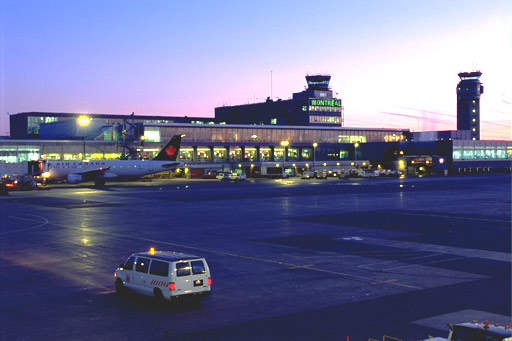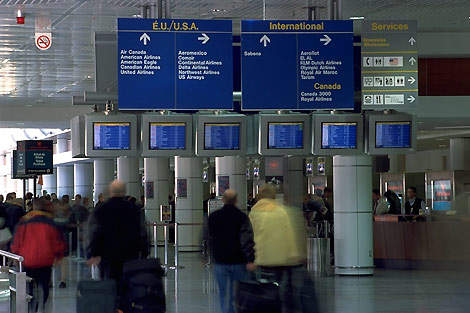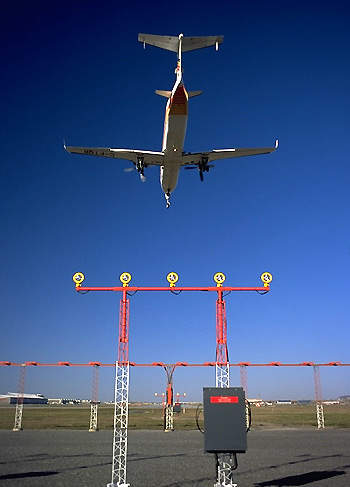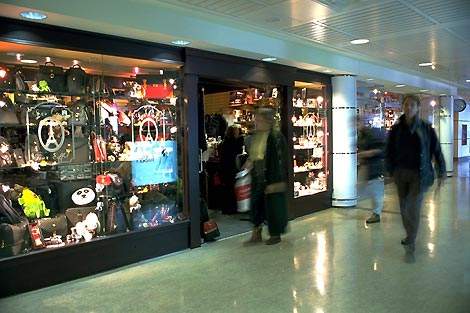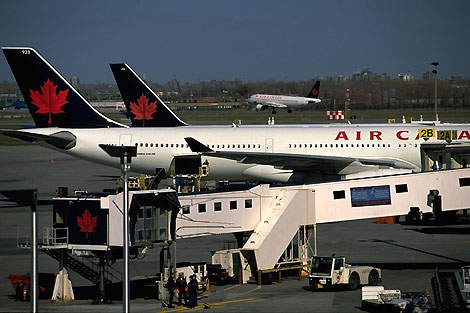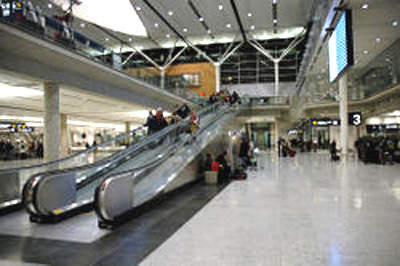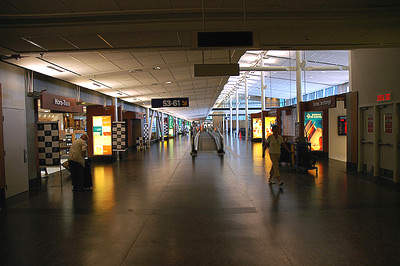Montréal-Pierre Elliott Trudeau International Airport is located in the city of Dorval, on the island of Montréal and is the international airport serving Montréal, Quebec, Canada. It is the busiest airport in the province of Quebec, the third busiest airport in Canada by passenger traffic (after Toronto Pearson and Vancouver International) and fourth busiest by aircraft movements, with 10,892,778 passengers and 208,329 aircraft movements in 2005.
The airport (formerly Montréal-Dorval Airport) is currently in the midst of a ten-year modernisation plan which is scheduled to be completed by 2009 and will give it a capacity of 20 million passengers per year.
Launched in 1999 with a budget of CN$716m, the expansion program includes the construction of several brand-new facilities, including a jetty for flights to the United States, another for overseas flights and a huge international arrivals complex.
MONTRÉAL-TRUDEAU EXPANSION PROGRAM
The expansion was designed to increase the terminal’s capacity and substantially enhance the level of passenger service. The major part of this program is now completed and passengers are enjoying the comfort, space and user-friendliness of the new facilities.
However, the ongoing modernisation program is still underway and refurbishment of several sections of the existing terminal continues, including the check-in area on the departures level and the public halls on the arrivals level.
Aéroports de Montréal (ADM) is financing all of these improvements itself, with no government grants. Together with its various partners, ADM is also working on a plan to upgrade land access to the airport.
By the end of 2006, 11.2 million passengers will have passed through the airport and the figure projected for 2010 is 12.7 million. By 2020, Montréal is expecting to see over 20 million passengers annually.
The phase three construction improved the airport so that it is one of the few in the world that is able and prepared to handle the new Airbus A380. Montréal is expecting to handle two of Air France’s A380s and an Air France Boeing 747 every day. The A380 will initially be used on North Atlantic route services from Paris to Montréal.
PHASE THREE – PARKING, ARRIVALS HALLS, TRANSBORDER JETTY
In order to meet constantly growing demand, ADM is adding 1,000 spaces to the multi-level ProxiParc facility, located adjacent to the terminal. This expansion opened on schedule in February 2006.
Expansion and refurbishment of the domestic arrivals hall is continuing. The work includes the expansion of the baggage-claim room for domestic flights, the extension of two baggage carrousels, the relocation of the car-rental agencies and the redesign of the public domestic arrivals area.
A new corridor will link the domestic and international arrivals halls. This opened in the second quarter of 2006.
In addition, ADM is planning to erect a building adjoining the transborder jetty that will house a new transborder departures area and a 300-room hotel above it. The first two levels of the nine-storey building will house the transborder departures sector.
A survey by the Horwarth Consulting firm established the commercial potential for a facility with 300 high-end rooms. The hotel is to be built and operated by a private partner.
These latest construction projects will begin in late 2006 provided permissions have been granted and planning issues resolved. ADM will also begin the next process of land acquisition to upgrade road traffic access to the airport and the construction of a new parking garage for passenger parking.
PHASE TWO – ARRIVAL / DEPARTURE AREAS, INTERNATIONAL JETTY
Phase two was completed in 2005 and required CA$305m. The airport inaugurated its new international arrival complex and a newly renovated domestic departures area in late 2004.
The international arrivals complex (completed in November 2004) is the gateway to Canada for all passengers arriving from the US and overseas. This architecturally striking building includes a large customs hall and a high-capacity baggage-claim area.
The refurbishment of the check-in area (completed December 2004) involved the expansion and reconfiguration of the check-in area for domestic and international flights in order to clear the terminal’s main entrance and facilitate the flow of passenger traffic. More check-in counters and self-service check-in kiosks were also added.
The international jetty was opened in June 2005 providing a departure point for some 110 international destinations. The jetty features 11 boarding gates and is designed to handle wide-body jets used for overseas flights, including the new Airbus 380. More than 3.1 million passengers will pass through the new jetty annually.
The new international jetty is well equipped with commercial services, with ten shops, including the largest duty-free store in Canada, as well as five bars and restaurants. An efficient signage system, wide corridors and moving sidewalks facilitate the journey to the waiting rooms.
The expansion and refurbishment of the public international arrivals hall – where arriving passengers are met by their family and friends – was completed in December 2005. The new facility is three times the size of the existing one and its interior design has been significantly improved.
PHASE ONE – TRANSBORDER JETTY, TERMINAL EXPANSION
Phase one of the redevelopment program was completed in late 2003. One of the major projects in the first phase was the transborder jetty which was officially opened by ADM in April 2003. The jetty handles all regular flights between Montréal and the USA.
At 420m long and between 18m and 28m wide, the new jetty features 17 boarding gates designed to receive all types of aircraft serving over 25 destinations. Two additional gates were added during 2005.
The structure is dominated by steel and glass and is notable for its spaciousness, natural light and excellent functionality. The jetty offers enhanced connectivity through strategically located handling points, optimised passenger flow and corridors between transborder and international areas.
The north-eastward expansion of the central terminal building was completed in September 2003. This new section of the terminal has added departure capacity for domestic and international flights (boutiques and restaurants, 36 check-in counters, boarding gates, etc).
This new section of the terminal also features more than 12,300m² of space, including three departure lounges, a baggage-handling room and a commercial area with six shops.
AIRPORT TRANSPORT INFRASTRUCTURE
ADM, the City of Montréal and Transports Québec, together with the Government of Canada, are planning to improve the Dorval interchange and build direct road links between the airport and highways 20 and 520.
Once the certificate of authorisation has been obtained, work is scheduled to begin in 2007 and end in 2009. In addition, ADM and VIA Rail are planning to build a 5km connector loop and a new rail station near Montréal-Trudeau terminal so that trains from Ottawa and Toronto-Kingston can serve the airport directly, facilitating transfers between the two modes of transportation.
Finally, ADM, together with a private- or public-sector partner, is planning to introduce an express rail shuttle service to accelerate access to the airport from the downtown core. This 20km-long shuttle would share the existing inter-city rail infrastructures but some additional work would be required at Central Station and on its rail corridor.
COMMUNICATIONS AND IT SYSTEM ENHANCEMENTS
The introduction of common-use technology has reduced costs by sharing the use of check-in and boarding facilities. ADM determined that the ARINC iMUSE system was most suitable.
Each iMUSE station is equipped with a standard internet browser. Airline employees may log on to their particular company intranet from any iMUSE terminal. The iMUSE architecture is inherently flexible, expandable and easy to use for web-enabled applications.
In September 2005, ADM, in collaboration with Bell Canada and Cisco Systems Canada, announced the signing of a long-term agreement to provide a fully integrated end-to-end solution to meet all of its evolving communication needs. Services covered by the agreement include:
- WiFi coverage permitting wireless internet access to the public, ADM and commercial users throughout Montréal-Trudeau airport
- IP telephony serving ADM and commercial users of Montréal-Trudeau airport space (e.g. airlines) and three other administrative sites of ADM
- Digital signage in public areas of Montréal-Trudeau will be available for tailor-made advertising and information delivery throughout the airport
- Computerised information kiosks to help travellers navigate the airport
- Business centres in public areas of Montréal-Trudeau, permitting travellers to access the internet, conduct video conferencing, and fax and print documents
PASSENGER LOADING BRIDGES
Seamless access to aircraft is provided by retractable boarding bridges. About ten ground vehicles are generally required to service each aircraft. These vehicles emit a total of 1,541t of CO into the air each year, representing approximately 53% of total CO emissions generated by airport operations.
In an effort to reduce these emissions, ADM integrated dedicated aircraft air conditioning and electrical supply capability into each of the 17 new passenger loading bridges, thereby eliminating the use of support vehicles. As a consequence, CO emissions for the daily operating cycle of a single B-747 cycle can be reduced by 2t a year.
CONTRACTORS
CETC-Varennes supplied the DABO thermal power system for terminal air supply devices. Tecsult conducted the site characterisation for contaminated soil removal. The leak detection system for the new fuel pipeline was supplied by Vista Research. Stone for the interior of the international arrivals jetty was quarried by Polycor and installed by Companie Carrelage de Montréal.
A more comprehensive list of contractors, designers and suppliers is given in the specification table.

